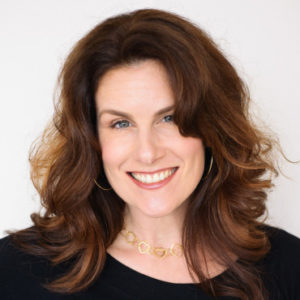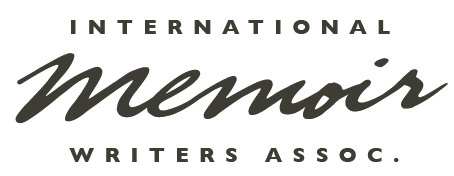Self-publishing success stories:
- 1931 – Irma Rombauer paid a printer to print her book, The Joy of Cooking – now published by Simon and Schuster and has sold 18 million copies.
- 1993 – James Redfield originally self-published The Celestine Prophecy, selling 100,000 copies out of the trunk of his Honda before Warner Books agreed to publish it.
- 2011 – The Martian (made into a film starring Matt Damon) by Andy Weir was originally released as a series of chapters on his blog, then self-published as an e-book
Over the past 20 years that I’ve been involved in publishing, the industry has changed dramatically. It has become more exciting, more accessible, and even more confusing.
There are so many things to consider when it comes to publishing your own book—so many moving parts, and so many things to spend money on.
With the advent of digital marketing, and print on demand, anybody can publish a book, which is wildly exciting. That said, anyone can publish a book, which is really scary. I’m going to be honest with you, when print-on-demand first started to take off, the quality of self-published books was awful—the late 90s and early 2000s of self-publishing saw a lot of badly produced books.
When print-on-demand first started to take off—in the late 90s and early 2000s—the industry saw a lot of poorly produced books. The first consumer print-on-demand publishing companies, like Infinity and Trafford Publishing, were passionate about helping authors get their books out there, but the quality control was sorely lacking.
Those bad books gave self-publishing a bad name. We saw a lot of poorly written stories with little to no editing, amateur book covers and interiors that may have been designed by professional designers, but not by book designers. Book design is more than knowing design, it’s knowing books and the audience, as well as knowing what sells, and creating a book that fits squarely in the genre.
Back then no reputable reviewer would touch a self-published book. Wholesale distributors like Ingram and Baker and Taylor refused to list and distribute self-published books, and booksellers like Barnes and Noble consequently couldn’t order them, and would not work directly with authors (not on a National level). It felt like Traditional Publishing had locked the door to indie publishers and there was no way to get in.
But, there were success stories and people were starting to take notice.
Where there is a need, someone will always step up to meet that need. More and more companies began opening their doors and offering authors a low cost means to self-publish.
In 2005, Amazon purchased BookSurge (a P.O.D. company) and Mobipocket (an electronic book file format), which we now know as Kindle.
As the self-publishing industry became more and more accessible, and traditional publishing started to shrink, professional editors and book designers found themselves looking for jobs, and they started offering their services to authors directly. Publishing consultants and book shepherds, or sherpas, started to find their place in the industry. As a result, the industry began producing better self-published books—the playing field was beginning to level out.
In 2008, for the first time in history, more books were self-published than those published traditionally.
In 2013, Ingram Spark offered a better quality product and made it possible for indie-authors to gain access to wholesale distribution, which was critical, because distribution had always been the crux of any author’s indie journey.
In 2015 the “indie published” sales surpassed the “big five.”
The print quality of a P.O.D. title can be equal to that of a traditionally published trade paperback book.
And, authors have begun to recognize that by self-publishing they are taking on the job not only of author but of publisher and marketer as well—three distinct jobs that require a lot of work and a lot of knowledge.
I recently heard Lee Wind, Director of Marketing and Programming at IBPA, refer to the phrase self-publishing as a misnomer, which rings so true! You’re not actually supposed to do it yourself. You need help.
The good news is that as the industry has changed, professional assistance is now readily available. Savvy authors looking to self-publish these days get help with content editing, copy editing and book design, not to mention marketing.
This improvement in quality is feeding the indie-publishing industry. Because indie-authors are bringing us well-written, well-edited, and well-produced books like The Martian, reputable reviewers are taking notice. Publishers Weekly now reviews indie-books. This is huge, because indie-authors are finally getting a chance at much needed visibility.
The bottom line, is that in today’s climate, if you are going to embark on this journey, you’ve got to do it right and make good choices or you will waste a lot of time, and effort, and money.
Bringing us to the book sherpa. A good book sherpa will help you navigate the rough waters of publishing, avoid the under currents, and work with experts who will make your life easier, not harder. A knowledgeable book sherpa will help you make your book the best it can be.
Recommendations for getting started:
- Join local organizations like SDMWA, PWSD, and IBPA and ask questions. Ask other authors.
- Find your bookshelf: the five books that your book will sit next to on the bookstore shelf.
- Determine your publishing goals: for family, credibility, to be famous, just get your story out there, to write more books.
- Establish your budget: How much time do you have? How much money do you have? What’s your emotional budget? How comfortable are you blogging, being on social media, getting in front of a live audience?
- Find your book sherpa. Work with someone who is known in the industry. Be weary of people who make a lot of promises and sound too good to be true. There’s sharks in them waters.
The things a book sherpa will help you with:
- Market analysis: is your book ready, or do you need an editor? A good publishing consultant will help you ensure that your book is the best it can be.
- Finding your audience.
- Building your platform: establish your personal brand, messaging strategy, develop a plan to stay connected, build your mailing list.
- Develop a plan to connect with supporters and influencers.
- Establish your goals and set expectations.
- Find beta readers.
- Decide which publishing path to follow: traditional, hybrid, or self-publishing.
Printing and Distribution:
- Printer and distribution options (based on where people are most likely to buy your book and how much you want to invest).
- P.O.D. offers printing and distribution. CreateSpace distributes to amazon.com and IngramSpark distributes to Ingram for all other booksellers like Barnes and Noble, airports, Costco, and libraries.
Packaging and Production
- Would your book benefit from the added expense of embossing and a hardcover?
- Choosing the best trim size and format, as well as cover treatments, etc.
- Choosing the type of paper.
- Deciding on a price point for all formats of your book.
- Choosing the best genre, BISAC (book industry standards and communication) codes, keywords, and meta data to ensure that readers find your book.
- Helping you find a professional book designer for your cover and interior.
- Engaging a professional to proofread the final cover and interior design.
- Purchasing a block ISBNs for each format of your book from Bowker.
- Obtaining a barcode.
- Converting your book to Ebook and getting it into distribution channels.
- Registering tour book with the Library of Congress and applying for a CIP data block.
- Copyrighting your manuscript.
Publishing as a Business
- Creating a publishing entity (LLC or sole proprietor).
- Creating an imprint name/logo.
- Business license/DBA.
- Publishing address, phone, website.
- Seller’s permit.
Marketing
- Website: brand, subscriber list, call-to-action
- Pre-sales
- Reviewers
- Publicity
- Endorsements
- Creating community and building your tribe, staying connected through your website
- Place a call-to-action in the back of your book, like book club questions, social media addresses, and a link to a landing page on your website.
- Release party and local marketing
- National media coverage.
 Jeniffer Thompson is a book sherpa, personal branding expert, and digital marketing strategist with more than 20 years experience in the publishing industry. She is the Founder and Principal at Monkey C Media, an award-winning design firm specializing in book packaging, author websites, and digital marketing strategies. She is an author and speaker who delivers strategy-rich content and actionable tools that educate and empower authors. She is passionate about helping authors navigate their publishing journey, elevate their brand, and establish their author platform. Mrs. Thompson serves on the board of Publishers and Writers of San Diego and San Diego Memoir Writer’s Assoc. Read her blog at JenifferThompson.com; visit her company website at monkeyCmedia.com
Jeniffer Thompson is a book sherpa, personal branding expert, and digital marketing strategist with more than 20 years experience in the publishing industry. She is the Founder and Principal at Monkey C Media, an award-winning design firm specializing in book packaging, author websites, and digital marketing strategies. She is an author and speaker who delivers strategy-rich content and actionable tools that educate and empower authors. She is passionate about helping authors navigate their publishing journey, elevate their brand, and establish their author platform. Mrs. Thompson serves on the board of Publishers and Writers of San Diego and San Diego Memoir Writer’s Assoc. Read her blog at JenifferThompson.com; visit her company website at monkeyCmedia.com

